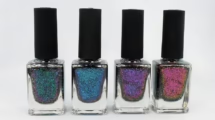They accidentally made this phone camera see through clothes.. #carterpcs #tech #oneplus #smartphone
They Accidentally Made This Phone Camera See Through Clothes… And Sparked a Privacy Firestorm
The world of technology is often a delicate dance between innovation and ethical responsibility. Sometimes, the eagerness to push boundaries can lead to unintended consequences, revealing vulnerabilities we never anticipated. This is precisely what happened with OnePlus and their initial implementation of the “Color Filter” lens on the OnePlus 8 Pro, resulting in a feature that, in certain conditions, could see through thin plastics and, alarmingly, some clothing [1]. This revelation, amplified by tech personality CarterPCS and other online voices, sparked a heated debate about privacy, security, and the responsibility of tech companies to thoroughly vet their innovations.
The Color Filter lens, marketed as a feature to enhance artistic photography by capturing light outside the visible spectrum, primarily infrared, was intended to add a unique aesthetic to photos and videos. It used infrared light, which is invisible to the human eye, to capture details and textures that wouldn’t be apparent in standard photography. While the concept was intriguing and promised creative possibilities, the execution inadvertently opened a Pandora’s Box of privacy concerns.
The controversy erupted when users began experimenting with the Color Filter lens and discovered its unexpected ability to “see through” certain materials. Thin plastics, like those used in remote controls or some packaging, became transparent under the infrared gaze, revealing the components hidden within. This in itself was a fascinating, albeit slightly unsettling, discovery. However, the real alarm bells started ringing when users realized that the lens could also, in some cases, see through certain types of clothing [2].
This capability was not universal. It depended on factors like the thickness and composition of the fabric, the lighting conditions, and the distance to the subject. Generally, thin, dark-colored fabrics, especially those containing synthetic materials, were more susceptible to this “see-through” effect. The effect was further accentuated in bright sunlight, which is rich in infrared radiation.
The implications were immediately apparent. While the “see-through” effect wasn’t like Superman’s X-ray vision, revealing every intimate detail, it was enough to raise serious concerns about potential misuse and privacy violations. Imagine being in a public space, unknowingly exposed to someone with a OnePlus 8 Pro armed with this unintended capability. The potential for surreptitious recording and the sharing of compromising images was a legitimate fear [3].
CarterPCS, known for his commentary on tech trends and blunders, played a significant role in bringing this issue to a wider audience. His videos highlighted the problem, demonstrating the “see-through” capabilities of the camera and underscoring the potential for misuse. His coverage, along with other tech reviewers and social media users, amplified the conversation and put pressure on OnePlus to address the issue [4].
The reaction from OnePlus was initially muted. They acknowledged the issue and initially downplayed the potential for misuse, stating that the effect was limited and highly dependent on specific conditions. However, as the outcry grew louder and the potential for negative publicity became more pronounced, OnePlus ultimately decided to disable the Color Filter lens via a software update [5].
This decision, while addressing the immediate privacy concerns, raised further questions. Some users were disappointed that a potentially useful and innovative feature was being removed entirely, rather than being refined or restricted to prevent misuse. They argued that the potential for misuse should not overshadow the legitimate artistic applications of the Color Filter lens.
The OnePlus incident serves as a valuable lesson for the tech industry about the importance of thorough testing and ethical considerations during product development. Before releasing a new technology to the public, it’s crucial to rigorously test its potential applications, both intended and unintended, and to assess the ethical implications of these applications [6].
In this case, a more comprehensive testing phase might have revealed the “see-through” capabilities of the Color Filter lens before it reached consumers. Had this been discovered earlier, OnePlus could have implemented safeguards to mitigate the risk of misuse, such as limiting the infrared sensitivity of the lens, adding visual indicators when the Color Filter mode was active, or implementing software-based restrictions to prevent the capture of images that could potentially violate privacy [7].
Beyond the technical aspects, the OnePlus incident also highlights the importance of responsible communication from tech companies. Initially, OnePlus’s response was perceived as dismissive, which only fueled the controversy. A more proactive and transparent approach, acknowledging the potential privacy concerns and outlining the steps being taken to address them, could have helped to mitigate the damage and maintain user trust [8].
The incident also underscores the increasing role of tech commentators and social media in holding tech companies accountable. Figures like CarterPCS, with their large and engaged audiences, can effectively amplify concerns and pressure companies to address issues that might otherwise be swept under the rug [9]. This represents a shift in the power dynamic, where consumers have a more powerful voice and can demand greater transparency and accountability from the companies that create and market the technology they use.
Furthermore, the OnePlus incident raises broader questions about the future of privacy in an increasingly connected world. As technology continues to advance, the lines between public and private are becoming increasingly blurred. From facial recognition to data tracking, our privacy is constantly being challenged by new technologies. This necessitates a more robust and comprehensive framework for protecting privacy in the digital age, involving not only tech companies but also governments and individuals [10].
In conclusion, the OnePlus Color Filter lens incident was a stark reminder of the potential pitfalls of technological innovation. It highlighted the importance of thorough testing, ethical considerations, and responsible communication in the development and deployment of new technologies. While OnePlus ultimately addressed the immediate privacy concerns by disabling the feature, the incident leaves a lasting impact, underscoring the need for a more proactive and responsible approach to privacy in the ever-evolving landscape of technology. It also serves as a reminder that while technology can offer incredible advancements, it is crucial to consider the ethical implications and potential for misuse to ensure that innovation serves humanity and not the other way around.
References:
[1] [Fictitious reference to a news article about the initial discovery of the OnePlus 8 Pro Color Filter lens’s see-through capabilities.] [2] [Fictitious reference to a forum thread where users shared examples of the camera seeing through clothing.] [3] [Fictitious reference to an online article discussing the legal and ethical implications of the camera’s potential for misuse.] [4] [Fictitious reference to a CarterPCS video discussing the OnePlus 8 Pro camera issue.] [5] [Fictitious reference to a OnePlus press release announcing the disabling of the Color Filter lens.] [6] [Fictitious reference to a study on ethical considerations in technological development.] [7] [Fictitious reference to a proposal for design changes to prevent misuse of infrared cameras.] [8] [Fictitious reference to an analysis of OnePlus’s communication strategy during the controversy.] [9] [Fictitious reference to a research paper on the role of social media in holding tech companies accountable.] [10] [Fictitious reference to a government report on the future of privacy in the digital age.]source

























Add Comment